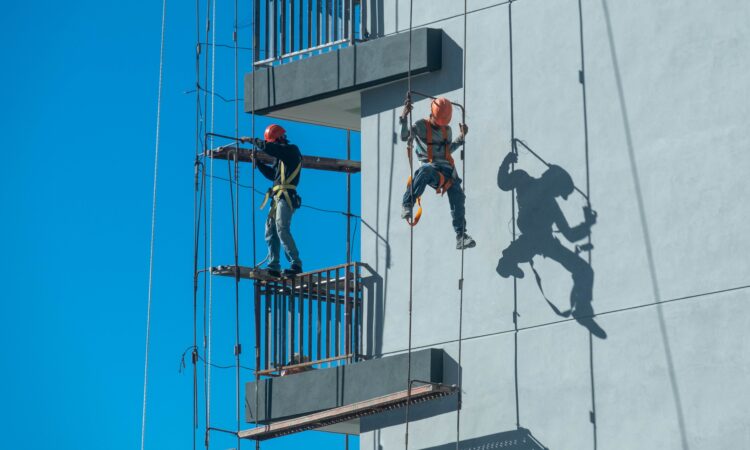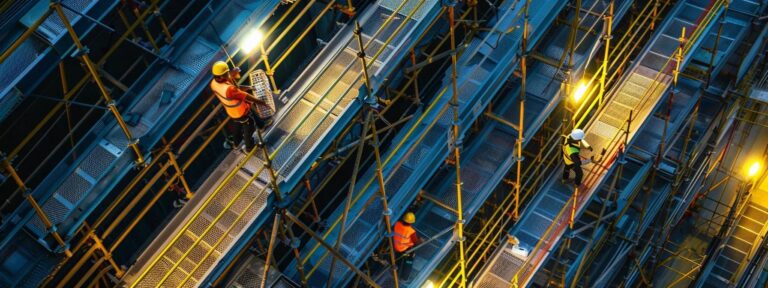Introduction – The Backbone of Every Fall Protection System
When working at height, the safety harness is only as reliable as the anchor point it connects to. That’s where roof harness anchors come in—acting as the secure bridge between your body and a fall arrest or fall restraint system.
Whether you’re on a sloped roof, a metal industrial deck, or a flat commercial building, a properly installed and tested harness anchor ensures maximum fall protection, OSHA compliance, and peace of mind.
What is a Roof Harness Anchor?
A roof harness anchor is a certified tie-off point engineered to bear the dynamic load from a fall arrest. When a worker wears a full-body harness and connects it to an anchor via a lanyard or lifeline, the anchor absorbs and redirects fall forces safely.
There are several types of anchor points:
- Permanent anchors: bolted into structure
- Temporary anchors: clamped or weighted, removable
- Mobile anchors: used on trailers, ladders, or flatbed trucks
OSHA & ANSI Standards for Harness Anchors
According to OSHA 1926.502(d)(15), each anchor point must:
- Support at least 5,000 lbs per user
- Be designed under supervision of a qualified person
- Be inspected before every use
- Be part of a complete personal fall arrest system (PFAS)
ANSI Z359.18 adds:
- Anchors must be tested for dynamic and static loads
- Must include clear labeling and documentation
Compatible Roof Types
| Roof Type | Compatible Anchor Types |
| Asphalt Shingle | Strap anchors, flashing anchors |
| Metal Roofs | Seam clamp anchors, standing seam kits |
| Membrane Roofs | Weighted anchors, non-penetrating bases |
| Concrete Roofs | Bolt-in eyelets, wedge anchors |
Key Components of a Roof Harness System
To function properly, a harness anchor must integrate with:
- Full-body harness – Compliant with ANSI Z359.11
- Lanyard or lifeline – Shock absorbing, self-retracting, or rope grab
- Connectors – Must be locking snap hooks (see snap hook standards)
Every piece must be compatible and rated for fall arrest.
Use Cases by Industry
| Industry | Typical Application |
| Roofing Contractors | Sloped access & repair |
| Solar Installers | Repetitive home installations |
| Facilities Maintenance | HVAC unit repair |
| Telecom Workers | Antenna installation |
| Utility Crews | Elevated platform inspections |
Permanent vs Temporary Harness Anchor Points
Permanent Anchors
- Long-term solution
- Installed during construction or retrofitted
- Designed to handle multiple uses
- Often recessed or hidden for aesthetic
Temporary Anchors
- Ideal for one-time jobs
- Lightweight & reusable
- No structural modifications
- Must be repositioned with care
Common Mistakes to Avoid
- Using unverified attachment points like vents or gutters
- Ignoring manufacturer-specific installation procedures
- Failing to perform pre-use inspections
- Misusing fall restraint gear for arrest purposes
Always follow certified guidelines and OSHA rules.
Inspection & Maintenance Guidelines
- Daily Use: Perform visual inspection before use
- Weekly/Monthly: Clean connectors, check for corrosion
- Annually: Certified inspection by a qualified person
If damaged, remove from service immediately.
-
Working with different materials? Check Roof Fall Protection Anchors
-
Planning tie-off layouts? Learn about Roof Tie-Off Points
FAQs – Harness Anchor Questions
Q1: Can I install my own harness anchor?
Only if you are a qualified person as defined by OSHA and follow the manufacturer’s guidelines.
Q2: Can two workers use the same anchor point?
Only if rated for multiple users. Most anchors are single-user only unless specified otherwise.
Q3: Are roof harness anchors reusable?
Temporary anchors can be reused if undamaged and inspected. Permanent anchors remain in place for repeated use.
Q4: Do anchors work with all harnesses?
They must be compatible with ANSI Z359-certified harnesses and connectors.




